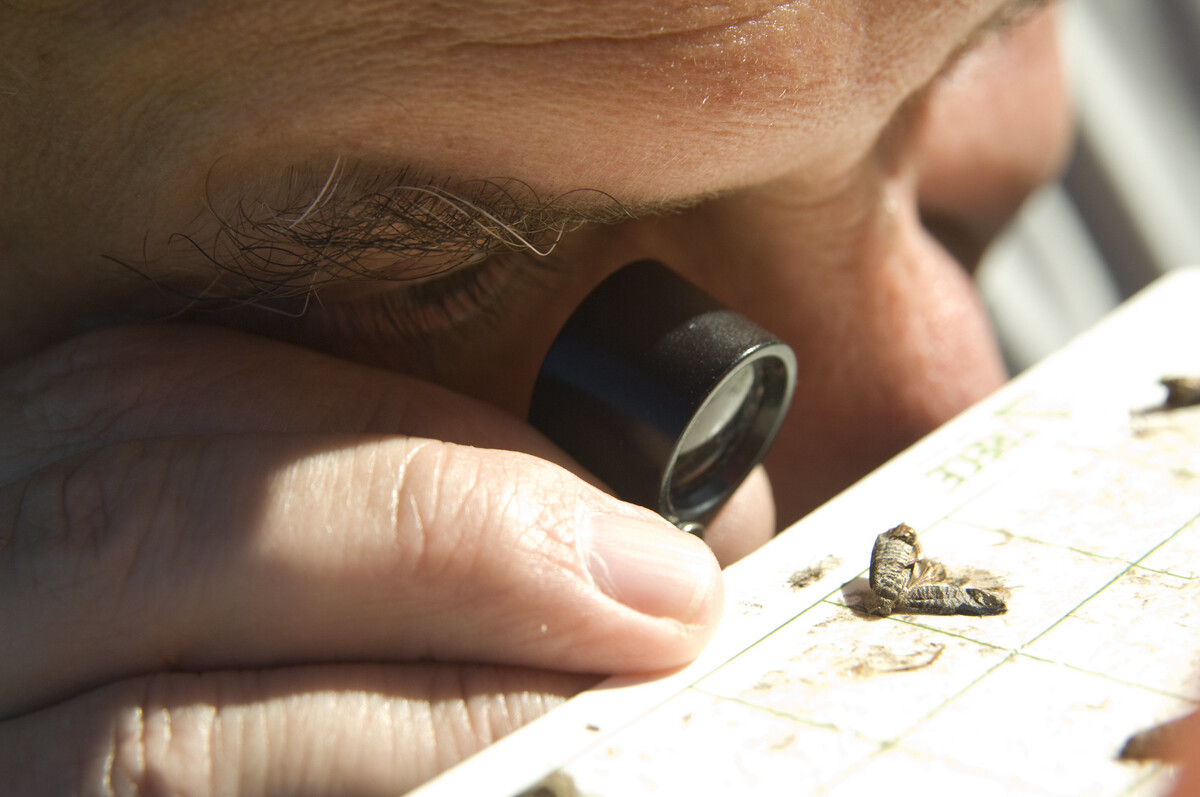Home>Gardening News and Trends>Latest News>What Are Two Ways In Which Street Lights Affect Insects


Latest News
What Are Two Ways In Which Street Lights Affect Insects
Published: November 29, 2023
Discover the latest news on how street lights impact insects. Explore two key ways these illuminations affect insect behavior and populations.
(Many of the links in this article redirect to a specific reviewed product. Your purchase of these products through affiliate links helps to generate commission for Chicagolandgardening.com, at no extra cost. Learn more)
Table of Contents
Introduction
Street lights have become an integral part of urban landscapes, providing safety and visibility to pedestrians and motorists at night. However, their presence and intensity have unintended consequences on the natural environment, particularly on insects. These small creatures play a crucial role in various ecosystems as pollinators, decomposers, and a source of food for other animals. The impact of street lights on insects is a topic of growing concern and research.
As artificial sources of light, street lights emit a different type and spectrum of light compared to the moon and stars, which insects have evolved to navigate by. This mismatch can disrupt their natural behavior and have far-reaching effects on their populations and ecosystem interactions. In this article, we will explore two key ways in which street lights affect insects: the disruption of nocturnal navigation and the alteration of breeding and mating patterns.
Understanding these impacts is essential for developing sustainable lighting practices and mitigating potential harm to insect populations. By optimizing street lighting to minimize its negative effects on insects, we can strike a balance between human needs and the preservation of biodiversity.
Impact of Street Lights on Insects
1. Disruption of Nocturnal Navigation:
One of the primary effects of street lights on insects is the disruption of their nocturnal navigation. Many insect species rely on natural light sources, such as the moon and stars, to orient themselves and navigate their surroundings. However, the artificial light emitted by street lights can interfere with this process. Insects may become disoriented and confused, often circling the light source continuously or getting trapped in its glare.
This disruption of navigation can have several consequences. Firstly, insects may become exhausted from futile flight and waste energy that could be better utilized for foraging, mating, or other vital activities. Secondly, the altered flight patterns caused by street lights may lead insects to venture into unfamiliar and potentially hazardous areas, increasing their risk of predation or exposure to environmental stressors. Finally, the attraction of insects to street lights can disrupt natural ecosystem functioning, as certain species may be drawn away from their usual habitats or food sources, impacting pollination and other ecological processes.
2. Alteration of Breeding and Mating Patterns:
Street lights at night can also disrupt the breeding and mating patterns of insects. Many insect species rely on specific environmental cues, such as the intensity and timing of natural light, to coordinate their reproductive cycles. However, the presence of artificial light can interfere with these cues and lead to disruptions in breeding and mating behaviors.
For some insects, such as moths, street lights act as “ecological traps.” The bright lights can deceive these insects into mistaking them for natural light sources, causing them to gather and mate in areas that are not suitable for their survival or reproduction. This can result in a decline in population numbers or a reduction in genetic diversity, which can have long-term consequences for the overall health and resilience of insect populations.
Furthermore, the alteration of mating patterns caused by street lights can also impact the dynamics of predator-prey relationships. For instance, if the prey insects are drawn to street lights, their predators may follow suit, resulting in an imbalance in natural predation and potentially disrupting the delicate equilibrium of the ecosystem.
It is important to recognize that the impact of street lights on insects is not uniform across all species and ecosystems. Different insect species may respond differently to artificial light, and some may even benefit from it, such as those that are attracted to street lights as a food source. Nevertheless, the overall consensus among researchers is that minimizing the negative impacts of street lights on insect populations should be a priority, considering their crucial role in maintaining ecological balance.
Disruption of Nocturnal Navigation
Street lights can have a significant impact on the nocturnal navigation abilities of insects. These small creatures have evolved to rely on natural sources of light, such as the moon and stars, to guide their movements and behaviors during the night. However, the artificial light emitted by street lights can interfere with this natural process, leading to disruptions in their navigation patterns.
One of the key effects of street lights on insect navigation is the phenomenon known as phototaxis. Insects, like many other organisms, are phototactic, which means they have an innate attraction to light sources. This behavior is beneficial when insects are drawn to natural light sources, such as the moon, as it helps them maintain proper orientation and navigate their environment. However, when this attraction is directed towards artificial light sources, such as street lights, it can lead to detrimental consequences.
The intense brightness of street lights can disorient and confuse insects, causing them to fly in erratic patterns or become trapped in the light’s glare. This behavior, known as the “light-trap effect,” can result in wasted energy as insects exhaust themselves by flying in circles around the light source. In some cases, insects may even collide with the street lights or nearby objects in their attempts to navigate, leading to injury or death.
Moreover, the presence of street lights can also lead insects away from their natural habitats or preferred foraging areas. As insects are attracted to the artificial light, they may become diverted from their usual path and end up in habitats that may not provide them with the necessary resources for survival. This displacement can disrupt ecosystem interactions, affecting pollination, seed dispersal, and other critical ecological processes.
The disruption of nocturnal navigation caused by street lights extends beyond individual insects. It can have far-reaching effects on entire insect populations and ecosystem dynamics. For example, some insects use specific cues, such as the phases of the moon, to time their activities, such as the onset of mating or the emergence of new generations. The presence of street lights can interfere with these cues, leading to synchronization errors and mismatches in reproductive cycles.
It is worth noting that not all insect species are equally affected by street lights. Some may be more resilient in adapting to artificial light, while others may be highly sensitive and vulnerable to its effects. The degree of disruption also varies based on the intensity, duration, and spectrum of light emitted by the street lights.
To mitigate the disruptive effects of street lights on insect navigation, there are several potential solutions to consider. These include using lights with reduced intensity or shielding to minimize light spillage, implementing efficient lighting designs that direct light downward rather than scattering it in all directions, and adopting lighting technologies that emit light in wavelengths less attractive to insects.
By understanding the impact of street lights on insect navigation and implementing suitable lighting practices, we can strike a balance between human safety and preserving the delicate ecosystems that rely on these small but vital creatures.
Alteration of Breeding and Mating Patterns
Street lights have the potential to disrupt the breeding and mating patterns of insects, which can have profound consequences for their populations and the overall ecological balance.
Many insect species rely on specific environmental cues, including natural light, to regulate their reproductive cycles. The presence of artificial light from street lights can interfere with these cues and lead to alterations in breeding and mating behaviors.
One significant effect of street lights on insect mating patterns is the phenomenon known as “ecological traps.” Certain insects, especially moths, are attracted to bright lights, mistaking them for natural light sources such as the moon or stars. As a result, they gather and mate in areas that may not be suitable for their survival or reproduction. These areas can lack essential resources like food and shelter, leading to reduced fitness and ultimately contributing to population decline.
The altered mating patterns caused by street lights can disrupt not only the reproductive success of individual insects but also the overall dynamics of predator-prey relationships. For example, if prey insects are drawn to street lights, their natural predators might also follow suit. This can create an imbalance in the predator-prey interactions and potentially destabilize the ecosystem.
In addition, artificial light can affect the timing of mating rituals. Many insect species rely on precise timing and synchronization to ensure successful mating. Artificial light disrupts the natural light-dark cycles that insects have adapted to, throwing off their biological clocks. As a result, mating behaviors might become desynchronized, reducing the efficiency of reproduction and potentially leading to decreased species viability.
Furthermore, the presence of street lights can impact the selection and attractiveness of potential mates for insects. Light pollution can mask or alter visual cues that insects use to identify suitable mates, leading to reduced mating success or mating with individuals of lower genetic fitness. This can result in decreased genetic diversity within populations, making insects more vulnerable to environmental pressures and reducing their ability to adapt to changing conditions.
It’s important to consider that not all insect species will be affected in the same way by street lights. Some species may be more adaptable and able to cope with the altered conditions, while others may be highly susceptible to disruption. Additionally, the degree of impact can vary based on factors such as the distance from the light source, the intensity and spectrum of the light emitted, and specific species’ natural behaviors.
To minimize the alteration of breeding and mating patterns caused by street lights, it is crucial to implement lighting strategies that reduce the negative impacts on insect populations. This includes using lighting fixtures with lower intensity, considering motion sensor lights that only activate when needed, and directing lights downward to minimize light pollution.
By recognizing and addressing the potential consequences of street lights on insect breeding and mating patterns, we can take steps to protect these essential creatures and maintain the delicate balance of our ecosystems.
Conclusion
The impact of street lights on insects is a growing concern in our increasingly urbanized world. These artificial sources of light can disrupt the natural behaviors, navigation, breeding, and mating patterns of insects, which play crucial roles in maintaining ecological balance.
Street lights interfere with the nocturnal navigation abilities of insects, causing them to become disoriented, waste energy, and potentially venture into hazardous areas. This disruption can have detrimental effects on their survival, as well as the functioning of ecosystems that rely on their pollination and other ecological interactions.
Furthermore, artificial light can alter the breeding and mating patterns of insects, leading to ecological traps and mismatches in reproductive cycles. This disruption can result in population decline, decreased genetic diversity, and disturbance of predator-prey relationships, potentially destabilizing the delicate balance of our ecosystems.
To mitigate the negative impact of street lights on insects, it is essential to adopt sustainable lighting practices. This can include reducing light intensity, shielding lights to minimize light spillage, using efficient lighting designs that direct light downward, and employing lighting technologies that emit wavelengths less attractive to insects.
By striking a balance between providing safety and visibility for humans at night and minimizing the adverse effects on insects, we can create a more sustainable and harmonious relationship between urban development and the natural world. Preserving the health and well-being of insect populations is not only crucial for their own survival but also for the overall health of ecosystems and the services they provide to humanity.
More research is needed to fully understand the impacts of street lights on different insect species and ecosystems. This will enable us to develop even more effective strategies to mitigate the negative consequences and promote coexistence between human needs and the preservation of biodiversity.
By embracing sustainable lighting practices and taking actions to minimize the disruption caused by street lights, we can ensure a brighter future for both humans and insects, fostering a healthier and more resilient natural environment.





